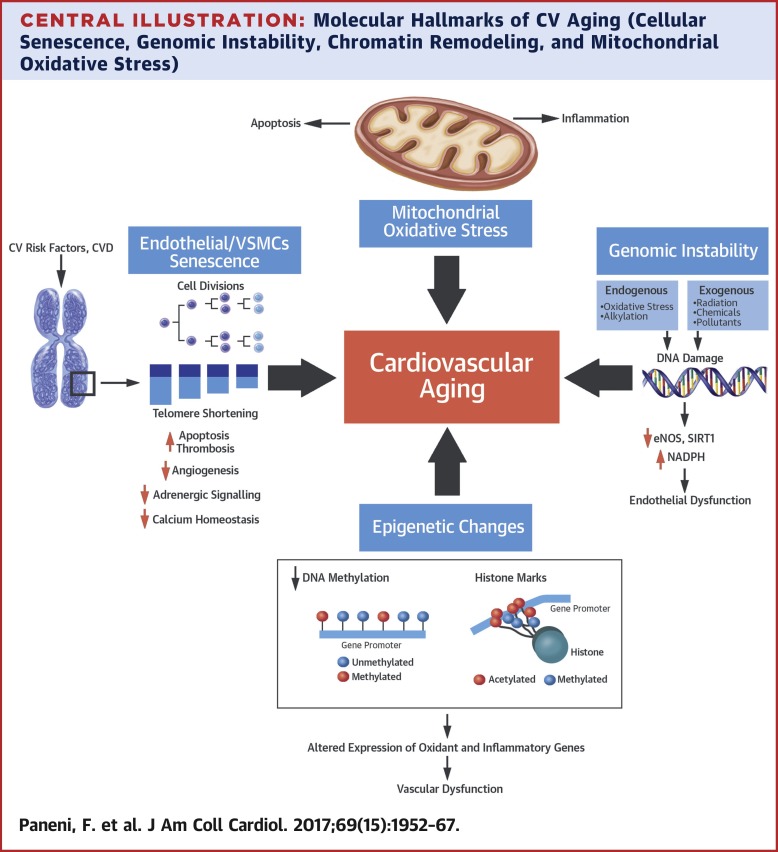
推荐文献
Clinical Trial2017 Apr 18;69(15):1952-1967.
JOURNAL:J Am Coll Cardiol. Article Link
Paneni F, Diaz Cañestro C, Camici GG et al. Keywords: arterial stiffness; endothelium; epigenetics; stem cells
Cardiovascular disease (CVD) presents a great burden for elderly patients, their caregivers, and health systems. Structural and functional alterations of vessels accumulate throughout life, culminating in increased risk of developing CVD. The growing elderly population worldwide highlights the need to understand how aging promotes CVD in order to develop new strategies to confront this challenge. This review provides examples of some major unresolved clinical problems encountered in daily cardiovascular practice as we care for elderly patients. Next, the authors summarize the current understanding of the mechanisms implicated in cardiovascular aging, and the potential for targeting novel pathways implicated in endothelial dysfunction, mitochondrial oxidative stress, chromatin remodeling, and genomic instability. Lastly, the authors consider critical aspects of vascular repair, including autologous transplantation of bone marrow-derived stem cells in elderly patients.
